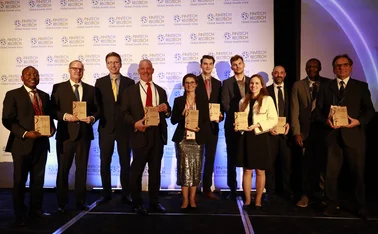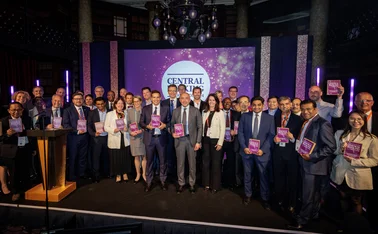
Sovereign investor of the year: Future Fund
Australian fund improved operations to become more nimble in the pursuit of yield

Investors around the world faced some tough decisions in 2015. Compressed yields on many fixed income investments combined with the diminished prospect of further asset price increases due to quantitative easing programmes resulted in many sovereign investors taking on yet more risk in a bid to secure solid returns. However, Australia’s US$85 billion Future Fund opted to take a different route.
The Future Fund, which made A$15.6 billion ($11.4 billion), or a return of 15.4%, in the financial year 2014/15 (an unfavourable year for many), has posted a striking average annual return of 8.0% since its inception in 2006. This performance comfortably surpasses the level implied by its primary ‘investment mandate directions’ which specify an average return of 4.5–5.5% above Australia’s long-term consumer price index.
Given its early record, there might be a danger that the Future Fund’s management would permit itself a degree of confidence to take on greater risk. But faced with a tougher investment environment, the first decision management took at the start of last year was to avoid increasing the Fund’s overall risk profile by increasing its cash holdings in 2015 from 16% to 19%. At the same time, the Future Fund focused on building its internal capacity to quickly take on new investments. By building out and deepening the organisation’s resources the Future Fund can ensure it remains flexible and robust to exploit opportunities in an increasingly competitive investment environment. This effort sets the Australian fund apart from many of its peers.
Structural reform
 David Neal, Future Fund
David Neal, Future Fund
One striking feature of the Future Fund is that the size of the portfolio it manages is in stark contrast to the number of staff it employs – around 50 investment experts. This is in large part because it outsources most of its investments to external asset managers. Future Fund executives believe its lean staffing gives them a sharper focus on decision making, something that chief executive David Neal has moved to develop in the past year. The Future Fund can assemble all its decision makers, be they sector bottom-up industry specialists or top-down macroeconomists, under one roof. The risks and returns from new opportunities in, for example, infrastructure, hedge funds or property, can then be vigorously debated from the micro and macro perspectives as well as against one another until an optimal investment decision is made.
This gives the Future Fund the nimbleness it needs to respond to fleeting investment opportunities – to spot elusive market opportunities others may miss. The Melbourne-based fund also “worked its portfolio hard” in the past year, completing 50 transactions with a net sale of A$14.5 billion of assets, according to Raphael Arndt, chief investment officer. One area of focus was transforming ‘non-core’ assets into ‘core’ assets in the property and infrastructure areas. For example, the Future Fund may invest in a building that is not fully leased or an infrastructure asset that requires restructuring before it can return a consistent flow of solid returns. “While transforming these types of assets requires more time and work, it can prove to be lucrative as something transformed into a ‘core’ asset is very attractive to many investors that are looking for more stable and secure income flows,” says Arndt.
One area in particular where the Future Fund is displaying its adaptability is its private equity programme. A key aim in this programme, says Arndt, is finding disciplined managers with experience in generating strong returns in volatile economic environments that offer good access to co-investment opportunities into small and rapidly growing companies in developed and emerging markets.
In the financial year 2012/13, the Future Fund made two co-investments in projects of this kind, and three in 2013/14. In 2014/15, by contrast, it made nine. The Future Fund is continuing to develop its team’s ability to carry out timely due diligence on such projects and then co-invest alongside “early stage venture capital managers”, Arndt says. By September 2015, private equity investments comprised 12% of its portfolio, with investments worth approximately A$14.1 billion.
Systems and controls
While the Fund already has an enviable reputation among its peers for the quality of its internal systems, it is working continuously to improve them, according to the testimony both of its own managers and of firms working for it. In 2015, the Future Fund made a number of senior appointments to extend its systems capabilities. Part of the effort is to fully understand the data, analysis and technology needs of the investment professionals and then have staff work with the IT team and external vendors to source and build appropriate systems.
The Future Fund has a centralised approach for a number of data sources and business functions including hedging and rebalancing, options monitoring, counterparty exposure and collateral management. This has allowed the Fund to improve support for decision making and more effectively disseminate single ‘source of truth’ portfolio information. The Fund is also reviewing the way it manages total portfolio overlays in recognition of the evolving regulation in this area. Australia’s Future Fund could have chosen to rest on its laurels given its strong performance in the first nine years of its life. But the fund’s management realises the old approaches will not bring high yields in the environment it now confronts. Instead, it is asking what it has to do to change, and is then acting on the answers. In this sense, it is a role model for other sovereign funds around the world grappling with similar problems.
The Australian fund
Australia’s Future Fund was set up by the country’s government in 2006, to make provision for the unfunded pension requirements of Australian government employees. In its first two years of existence the Australian government endowed it with a total of A$60.5 billion ($43.6 billion) in cash and shares, after which it made no further contributions. The Fund also has responsibility for managing several smaller funds: the Medical Research Future Fund, the DisabilityCare Australia Fund and two ‘nation-building funds’. These funds have so far been endowed with A$24.9 billion by the Australian government to pay for key fiscal commitments. They are run on more conservative lines, with investment mandates specifying benchmark returns of +0.3% on the Australian three-month bill bank swap rate versus 4.5% to 5.5% above the Australian consumer price index over the long term, which its board interprets as over a rolling 10-year period for the main Future Fund. The Future Fund currently has assets of A$118 billion with the organisation investing A$130 billion for the benefit of future generations of Australians.
The Central Banking awards were written by Christopher Jeffery, Tristan Carlyle, Daniel Hinge, Arvid Ahlund, Dan Hardie and Rachael King.
Only users who have a paid subscription or are part of a corporate subscription are able to print or copy content.
To access these options, along with all other subscription benefits, please contact info@centralbanking.com or view our subscription options here: http://subscriptions.centralbanking.com/subscribe
You are currently unable to print this content. Please contact info@centralbanking.com to find out more.
You are currently unable to copy this content. Please contact info@centralbanking.com to find out more.
Copyright Infopro Digital Limited. All rights reserved.
As outlined in our terms and conditions, https://www.infopro-digital.com/terms-and-conditions/subscriptions/ (point 2.4), printing is limited to a single copy.
If you would like to purchase additional rights please email info@centralbanking.com
Copyright Infopro Digital Limited. All rights reserved.
You may share this content using our article tools. As outlined in our terms and conditions, https://www.infopro-digital.com/terms-and-conditions/subscriptions/ (clause 2.4), an Authorised User may only make one copy of the materials for their own personal use. You must also comply with the restrictions in clause 2.5.
If you would like to purchase additional rights please email info@centralbanking.com







